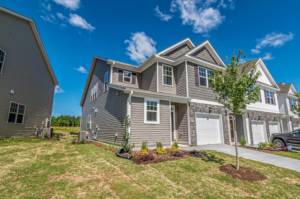Property managers juggle a lot, and safety is one of the most important areas to stay on top of. Keeping properties safe isn’t just about following the rules—it’s about making sure tenants feel comfortable and buildings stay in good shape. Problems can pop up from both the property itself and the environment, which means managers always have things to watch out for.

Knowing where the common safety hazards are is a smart way to prevent trouble before it starts. When managers tackle issues early, they avoid expensive repairs and keep tenants happy. A few regular maintenance habits go a long way toward preventing headaches and keeping properties running smoothly.
Overgrown Trees That Can Damage Buildings and Sidewalks
Neglected trees can cause real problems, especially in cities. Long branches can scrape buildings and block sidewalks, putting people at risk. In a place like Seattle, trees grow fast and need to be kept in check. When branches break off, they can damage property or injure someone walking by. Tree roots can also push up sidewalks, creating dangerous tripping hazards that lead to liability concerns.
Simple seasonal trimming helps stop these problems before they happen. Managers should plan regular tree checkups to catch issues early. Scheduling professional tree trimming in Seattle at least once a year keeps growth under control, improves safety, and boosts curb appeal. Tenants feel more confident in a property that looks well-maintained and thoughtfully managed.
Slippery Walkways from Moss and Algae
Seattle’s wet weather creates the perfect setting for moss and algae to grow, especially on shaded walkways. Besides looking messy, these slippery spots make it easy for people to fall and get hurt. Some areas get worse depending on foot traffic and shade, so it’s important to pay extra attention during the rainy months. Walkways near garden beds or lawn sprinklers can also stay damp longer, making them more prone to buildup.
Regular cleaning cuts down the risk, and using slip-resistant coatings makes walkways safer. Tenants notice when walkways stay clean and easy to walk on. Many managers hire outdoor cleaning services to deal with this quickly and keep the property looking good.
Poor Outdoor Lighting That Leads to Nighttime Accidents
Dim or broken lights in parking lots, hallways, or entrance areas make it harder to get around safely after dark. In Seattle, the long winter nights make this even more important. Without good lighting, tenants may trip or feel unsafe, and dark areas can sometimes attract crime. Areas near stairwells and alleyways tend to be especially vulnerable when lighting is poor, increasing risks of accidents and unwanted activity.
Good lighting is a quick way to make properties safer and more inviting. Energy-saving LED bulbs make areas brighter without driving up the electric bill. Regular checks on outdoor lighting keep spaces safe while cutting down on maintenance work in the long run.
Broken Fencing That Leaves Properties Open to Trouble
Run-down fencing sends the wrong message. It makes properties look neglected and can attract trespassers. Broken panels and sagging posts don’t just look bad—they put people and property at risk. Damaged fences also make it easier for vandals to target a building. Gaps in fencing near dumpsters or utility areas can even create easy access points for theft or illegal dumping.
Fixing fences promptly makes a clear statement about safety and care. Property managers should do regular fence checks and fix any problems quickly. Solid fencing keeps unwanted visitors out and lets tenants know their safety matters.
Blocked Roof Drains That Lead to Water Damage
Seattle’s heavy rain is hard on roofs. Clogged drains cause water to build up, which can weaken the roof and even lead to leaks or mold inside the building. Left unchecked, pooled water can cause expensive damage and make life harder for tenants. Flat roofs are especially vulnerable since they tend to collect more debris and have slower drainage compared to sloped roofs.
Regular drain cleaning stops these problems early. Property managers should check roof drains after big storms and at least a couple of times a year. Keeping water flowing off the roof reduces repair costs and keeps the property healthier overall.
Focusing on safety is one of the easiest ways to keep tenants happy while protecting property value. When managers handle common issues—like overgrown trees, slippery walkways, broken lights, damaged fences, and blocked drains—they avoid bigger problems down the line. A little upkeep goes a long way, reducing costly repairs and cutting down on complaints. Safe, clean properties make life easier for tenants and improve the overall look of the community. Making safety part of regular routines helps property managers create spaces where tenants feel comfortable, secure, and happy to stay long-term.
